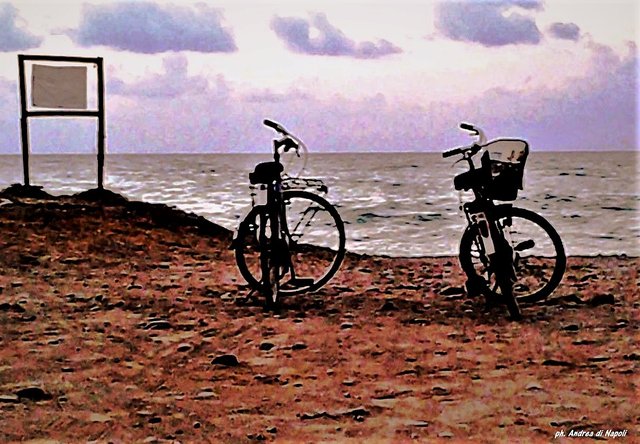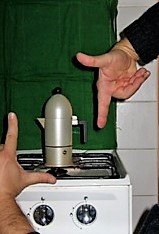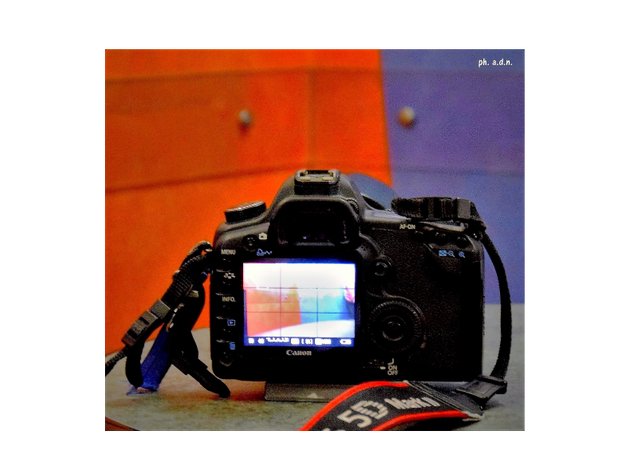Senza il display
Before the display - ITA/ENG
L'inquadratura e il mirino

L’abitudine di scattare fotografie con disinvoltura anche attraverso il proprio telefonino è ormai diffusissima. Dovunque e in qualsiasi momento è facilissimo fotografare se stessi, i propri amici e l’ambiente circostante, ma non è stato sempre così semplice, per chi si trova dietro l’obiettivo, stabilire gli esatti contorni della scena ripresa. Le fotocamere sono state dotate, nel tempo, di cornicette metalliche, mirini “a traguardo”, fessure o finestrelle, specchietti ed altri sistemi ottici per rendere più agevole ai fotografi inquadrare i propri soggetti, anche se talvolta si sono rivelati imprecisi.

In realtà il soggetto si trova inserito in un determinato contesto. Nel momento in cui individuiamo la nostra inquadratura è opportuno cercare di isolarlo da tutto ciò che rimane escluso, perché la fotografia dovrà bastare a se stessa, “completandosi” in una forma autonoma dall’ambiente circostante. Per riuscirci può essere utile, prima dello scatto, osservare il soggetto attraverso una cornice creata dalle nostre dita.

Nel corso degli anni le macchine fotografiche hanno subito trasformazioni radicali sia nell’aspetto estetico, attraverso un design sempre in linea con il gusto dei tempi, sia, ovviamente e soprattutto, nelle caratteristiche tecniche e nella precisione degli strumenti messi a disposizione dell’utilizzatore finale dell’apparecchio, ovvero del professionista, del fotoamatore e del principiante.
Uno specchietto reversibile, un vetro smerigliato o il caratteristico pozzetto posto sopra il corpo macchina, hanno costituito a lungo il mirino attraverso cui era possibile inquadrare il soggetto, accostando la macchina al petto o all’addome, per osservarne dall’alto l’immagine capovolta. Tuttora prestigiose aziende producono apparecchi di alta qualità che utilizzano il pozzetto su una o due ottiche di grande precisione.

Intorno agli anni Trenta del ‘900, con la produzione di macchine fotografiche pratiche e leggere, il mirino fu spostato per consentire l’inquadratura accostando velocemente il dispositivo al viso ed osservando, attraverso un oculare galileiano, l’aspetto più autentico e, perciò, meno gradito agli estrosi surrealisti, di una realtà dinamica, anzi frenetica, sempre in trasformazione.
Comprensibilmente questo semplice accorgimento modificò profondamente l’approccio alla fotografia e la principale casa costruttrice, la Leica, incoraggiò la nuova tendenza, sostenendo che portare la fotocamera all’altezza degli occhi consentiva di realizzare le fotografie "con la testa e non con la pancia".

Testo e fotografie di @adinapoli (s). La fotografie sono di proprietà dell'autore.

ENG - The display. The habit of taking pictures with ease even through your mobile phone is now widespread. Anywhere and at any time it is easy to photograph oneself, one's friends and the surrounding environment, but it has not always been so easy for those behind the lens to establish the exact contours of the scene. The cameras have been equipped, over time, with metal frames, crosshairs, slots or windows, mirrors and other optical systems to make it easier for photographers to frame their subjects, but not all have always been accurate. the subject is inserted in a certain context. In the moment in which we identify our frame it is opportune to try to isolate it from all that remains excluded, because the photograph will have to be sufficient to itself, "completing" itself in an autonomous form from the surrounding environment. To do that, it can be useful, before shooting, to observe the subject through a frame created by our fingers. Over the years, cameras have undergone radical transformations both in appearance and design, always in line with the taste of the times, both, obviously and above all, in the technical characteristics and precision of the tools made available to the final user of the appliance, ie the professional, the amateur photographer and the beginner. A reversible mirror, a frosted glass or the characteristic cockpit placed above the body machine, they constituted for a long time the viewfinder through which it was possible to frame the subject, putting the machine near the chest or abdomen, to observe the inverted image from above. Prestigious companies still produce high-quality devices that use the cockpit on one or two very precise optics. Around the thirties of the '900, with the production of practical and light cameras, the viewfinder was moved to allow framing by fast approaching the device to the face and observing, through a Galilean eyepiece, the most authentic aspect and, therefore, less pleasing to the whimsical surrealists, of a dynamic reality, rather frenetic, always in transformation. Understandably this simple device profoundly changed the approach to photography and the main builder, Leica, encouraged the new trend, claiming that bringing the camera to eye level allowed to take pictures "with the head and not with the belly".
Ne parli come se tu fossi piú che un semplice amatore!
Complimenti!!!😊👍
Posted using Partiko Android
Grazie. Quella tra me e la Fotografia, in effetti, è una lunga storia ... un po' complicata.
D'amore ed odio?
Posted using Partiko Android
Una storia di amicizia e di amore, ma con qualche delusione.
Congratulations @adinapoli! You have completed the following achievement on the Steem blockchain and have been rewarded with new badge(s) :
Click here to view your Board
If you no longer want to receive notifications, reply to this comment with the word
STOPVote for @Steemitboard as a witness and get one more award and increased upvotes!